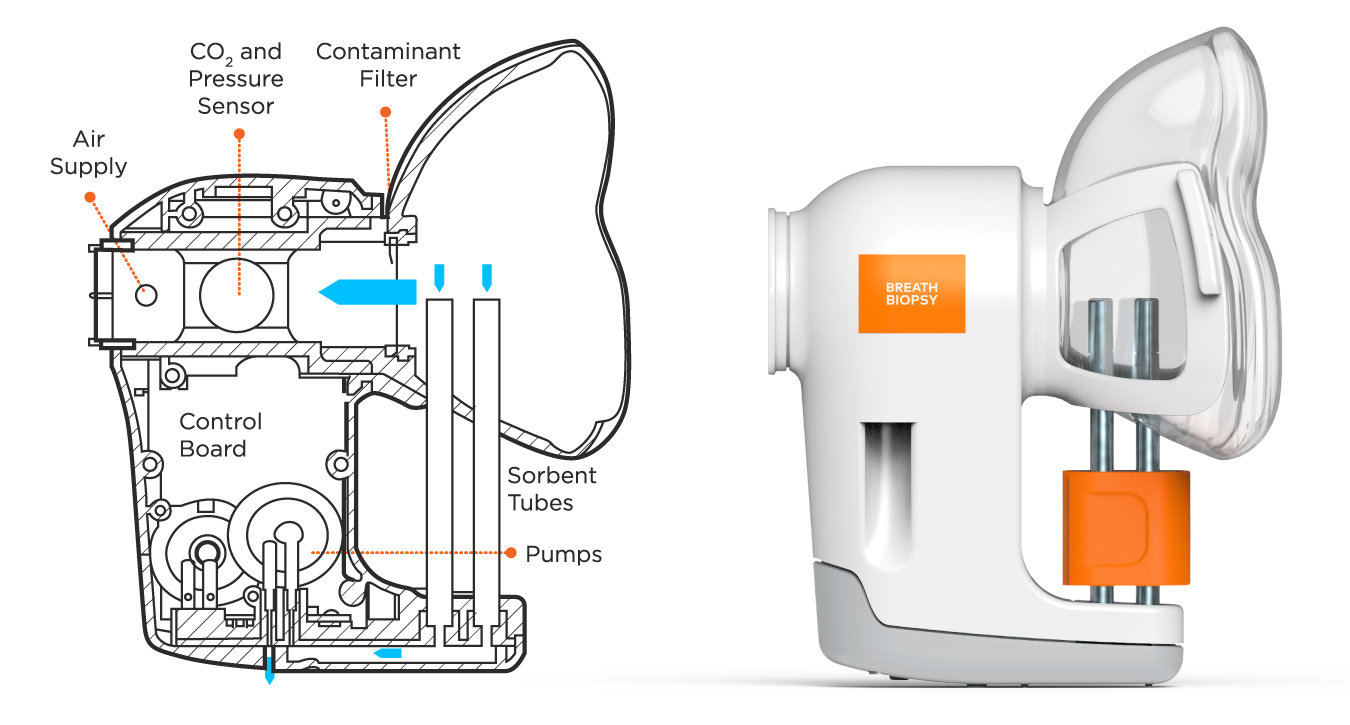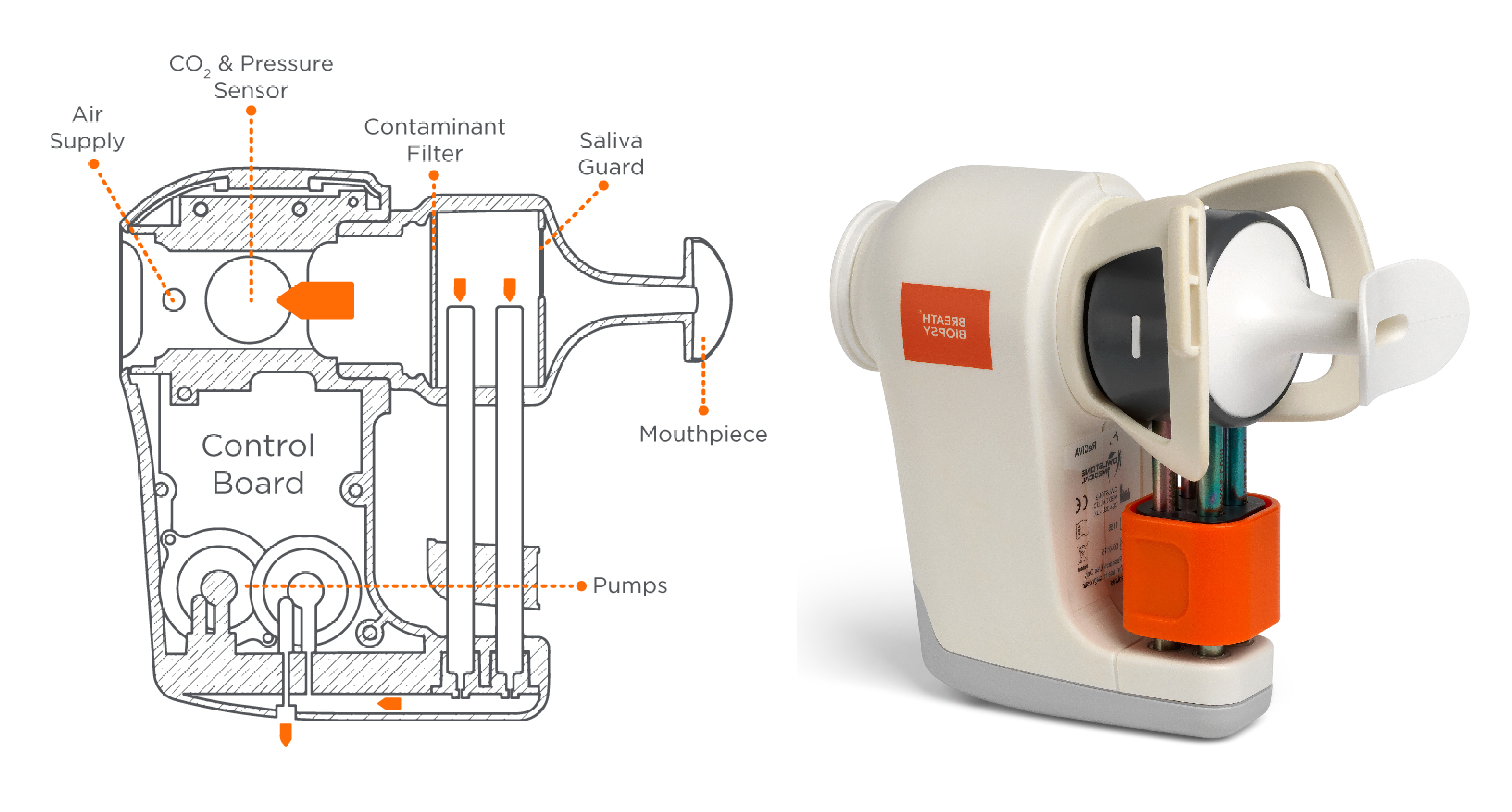Using ReCIVA with children – an independent review
Published on: 21 Mar 2022
A paper that evaluates the use of ReCIVA® Breath Sampler with children has recently been published in the Journal of Breath Research. Written by members of the East Midlands Breathomics Pathology Node (EMBER ), the paper reports their experiences of using ReCIVA with school age children as part of investigations into breath biomarkers for asthma.
This is the second paper that EMBER have published examining the performance of ReCIVA in clinical trials. Their previous paper1, published in 2020, explored the feasibility of using ReCIVA with patients reporting acute breathlessness and has already been discussed on this blog.
‘Asthma’ is a general term that is used to refer to a broad spectrum of conditions that cause chronic inflammation in the airways of the lungs. Currently a lack of accurate stratifying diagnostics means that treatments are often prescribed via ‘trial and error’ approach. Prescription of inappropriate treatments leads to poor disease control and unnecessary healthcare spending.
Sputum testing is often used in the clinic to associate patients with a particular asthma phenotype but is invasive and unpleasant, making it less appropriate for use with children. In contrast, breath collection is non-invasive, pain-free and can be repeated as often as needed. Previously published papers have identified potential exhaled breath biomarkers and suggested that breath monitoring might be a viable alternative to current clinical methods. However, a lot of these studies have used adult patients and controls. Diagnosis of asthma in children is especially problematic, so EMBER wanted to investigate whether breath testing could be viable for this group too.
In their paper Bhavra et al.2 noted that while ReCIVA was created to satisfy a need for reproducible breath sampling it had not been designed with children in mind. The user manual specifically prohibits its use with under 5s who might not be able to confidently communicate to a medical professional if they experienced any discomfort during sampling. So, to test its use with older children they collected 90 breath samples from 64 children, ranging from 5 to 15 years old, with and without asthma.
| Total participants | 90 |
| Acture asthma patients | 28 |
| Stable asthma patients | 51 |
| Controls | 11 |
| No. samples collected | 70 |
| Time to collect (range in seconds) | 157.0 – 900.1 |
| Errors recorded by ReCIVA
Leak detected Miscellaneous other |
24
17 7 |
The study showed that there were some complications using ReCIVA with a group it had not been initially designed for, but Bhavra et al. concluded that overall ‘The ReCIVA appears suitable for pediatric breath-sampling’.
“The ReCIVA breath-sampler was well tolerated in school-age children and breath-sample acquisition was found to be a feasible proposition. […] Overall, the data presented suggests that the ReCIVA is a promising candidate for standardised VOC collection in children […]”
When collecting a breath sample from children, their smaller lung capacity means that sampling will naturally take longer but the group was nonetheless able to collect a full liter of breath in 77% of samples. While using this version of ReCIVA with children did have some issues, ReCIVA was able to detect them and report to the user. In 15/21 cases issues related to ‘a poor fit of the face mask seal’ which was designed to fit adult faces.
The advice from Bhavra et al. for anyone else attempting to use ReCIVA with children is to pay attention to ‘post-processing of breath-sample meta-data’ [that will allow you to] assess the quality of sample-acquisition’. They also suggest that it might be useful to test different mask sizes to ‘reduce the potential for leaks’ and potentially further boost patient comfort during sampling.
In 2021 we updated the standard options for the ReCIVA Breath Sampler to include a mouthpiece rather than a face mask. Like the face mask, the mouthpiece was not designed specifically with children in mind, however, it was designed to prevent leaks, like those encountered in this study, by improving the quality of seal, providing a higher degree of flexibility for use with various face shapes.
In addition to an improved seal which minimizes ambient ingress, using the mouthpiece with ReCIVA improves data quality by reducing possible contamination from hardware materials such as siloxanes from the silicon masks. The mouthpiece allows for easier collection of blanks, for comparison to breath samples and provides a familiar experience to patients who may have used a similar mouthpiece before for Spirometric and lung function tests – or even scuba diving.
The mouthpiece is now the standard option for use with ReCIVA but face masks are also still available. If you’re not sure which option would be most suitable for your study you can discuss it with our expert team.
ReCIVA Breath Sampler Talk to an Expert
References
- Holden KA, Ibrahim W, Salman D, et al. (2020) Use of the ReCIVA device in breath sampling of patients with acute breathlessness: a feasibility study, ERJ Open Res. DOI: 10.1183/23120541.00119-2020
- Bhavra KK, Brightling CE, Ibrahim W, Salman D, et al. (2022) The utility of a standardised breath sampler in school age children within a real-world prospective study, Journal of Breath Research, 16:2. DOI: 10.1088/1752-7163/ac5526


